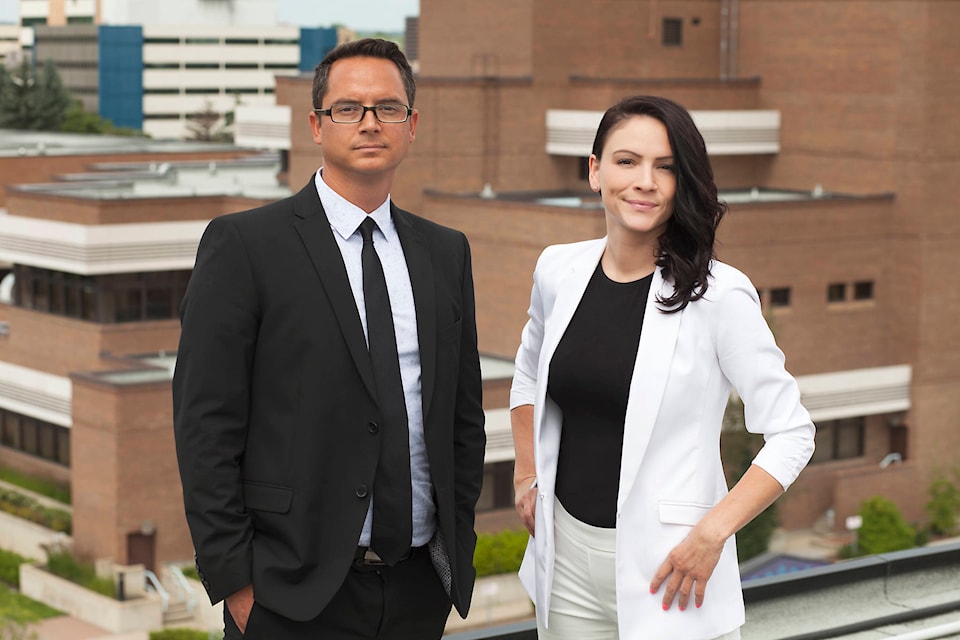Brother and sister Red Deer lawyers are among dozens calling on the International Criminal Court to look into Canada’s residential school tragedy and whether it constitutes crimes against humanity.
Andrew Phypers and his sister, Laura Phypers, who are both Indigenous, have signed a letter along with about 100 other attorneys asking the international court’s prosecutors to undertake a preliminary examination of the circumstances that led to the discovery of 215 unmarked graves for Indigenous children who attended the Kamloops Indian Residential School.
“The complainants submit the deaths, mass unmarked grave and general treatment of the 215 deceased children constitute crimes against humanity,” says the letter from the office of Calgary lawyer Brendan Miller.
The letter states that the complainants believe it is likely other such mass graves exist elsewhere in Canada in or around other residential schools and have been covered up the GOC (Government of Canada) and/or Vatican, their agents, employees, or actors, collectively or individually just as the mass grave at Kamloops Residential School was.”
All Canadians, including its Indigenous people, “need assurance that the agents, employees and actors of the GOC and the Vatican behind these crimes against humanity are subject to justice and that justice is seen to be done,” says the letter addressed to Karim Khan, chief prosecutor for the International Criminal Court in The Hague in the Netherlands.
The group, which includes former judges and someone who previously worked for the United Nations Center for International Crime Prevention, is requesting that the international court look into the residential school system and see if it meets the criteria for launching an investigation under the Crimes Against Humanity and War Crimes Act.
“It’s a subject that really does affect me,” said Phypers. “My reaction was fairly strong that something has got to be done.”
Phypers and his sister are from southern B.C.’s Lower Kootenay Band, which is part of the Ktunaxa Nation. They were raised on and off the reserve, located in the Creston, B.C. area.
Their mother, Eleanor George, was sent to St. Eugene Mission School in Cranbrook for a couple of years beginning when she was about six years old in the late 1960s.
She did not speak of her residential school experiences until she was well into her 50s.
“She spoke fluent Ktunaxa when she went in there and she lost her language in there because she wasn’t allowed to speak it for the years she was in there.
“She said she was left-handed when she went in there, and an artist. Now, she is not left-handed and not an artist because they would not let her use her left hand. She clearly remembers getting the strap on her left hand.”
While she said she was not otherwise physically abused, her time in the school was not a happy experience.
“She recalls it as a very negative experience and a lonely experience because she was taken from her mom’s care to go to that school.”
If the international criminal court determines an investigation into Canada’s residential school system is valid, Canadian authorities will be expected to co-operate.
“They could be given direction to produce the records that Canada has seemingly been reluctant to distribute at this point or disclose.”
If Canadian investigators do not appear to be acting in good faith or authentically, international investigators can get involved and take over if necessary.
Canada’s residential school system operated from 1876 to 1996. The Truth and Reconciliation Committee stated that while recorded number of children who died in residential school was 4,100, the real number was likely five to 10 times higher.
“We hope that the domestic authorities open up and do a genuine investigation into the matters,” said Phypers. “We hope that as a result of this the documents that have been guarded by the church and guarded by the Canadian government are released, especially for the Kamloops school but also for the other residential schools.
“We want those records because that could really provide closure to a lot of different families affected because their relatives attended those schools and especially for the relatives of those who never came home.”
St. Eugene is the only residential school to be converted into a resort and is now the St. Eugene Gold Resort and Casino.
